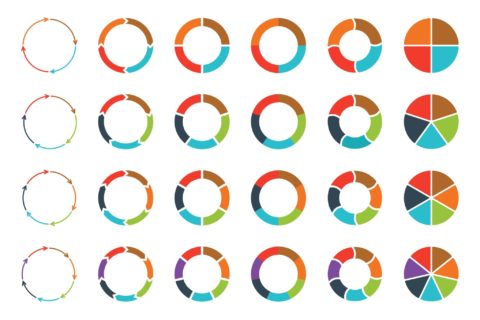By Dr. Eugene Kritski
The Nature of Expectations
In recent years there has been a growing concern amongst research buyers regarding the usefulness and reliability of opinion polls, in general, and the predictive adequacy of attitudinal metrics, in particular. With the growing use of big data, many clients are questioning the ability of stated attitudes or ratings of corporate reputation to shape stakeholders’ behaviour. Many are expecting research to predict specific behaviours, similar to the way that seismologists predict earthquakes or meteorologists the weather. Many clients ask us why we are so slow in adopting a “new thinking”, often mentioning behavioural economics or the “herd theory”, for example.
Skepticism of causal relationships between attitudes and behaviours was voiced back in the 1930’s when researchers first described the social desirability bias. Many studies found attitudes to be very poor predictors of behaviour and began to question the utility of the attitude construct. This skepticism received a fresh impetus with the emergence of behavioural economics, brought into the public discourse in 2011 by D. Kahneman’s book “Thinking Fast and Slow”[1] which argues that the majority of decisions we make result from heuristics rather than from cognitive, deliberate, or rational judgement. In other words people do not do what they say they will. They act on impulse.
Another stream of criticism was inspired by the ‘herd’ theory by Mark Earls, who questioned the role of individual agency in forming people’s attitudes and behaviours. In his paper entitled ‘Advertising to the herd’[2] he daringly positioned this theory as a ’new conception of human beings’, claiming that the biggest challenge for market researchers is to accept the fact of unreliability of self-reporting metrics, which he describes as “irrelevant and not predictive.” According to Earls, we collect and measure verbal accounts of attitudes “largely because we can.”
All of the above is true only on the assumption that reported attitudes are taken at face value, treated as rational and individual, and left untouched by researchers’ interpretations. Man is a social being but it is hardly a ’new conception of human beings’ – first proposed by Aristotle and explored by a number of great minds, including Marx, Freud, Jung, Cooley, Meads, Parsons, Merton and Levi-Strauss, who tried to explain the balance between social an individual in human nature. Public attitudes are not completely rational and involve a great deal of heuristics, neither are they purely individual. Attitudes that we are measuring, are intricate combinations of gut feeling, rational judgement, individual and social.
Behavioural economics and the herd theory are useful frameworks for developing communication campaigns in the areas of pricing and market positioning which are not very common areas for reputation research. Here at GlobeScan we have the capacity to test and design messages using the behavioural economics principles. We apply the learning from behavioural economics to developing, framing and anchoring survey questions, as well as concept messages we test in our projects. In my opinion behavioural economics is a complement to what we do rather than a replacement for more ‘traditional’ methods.
The Nature of Corporate Reputation
The nature of reputation is attitudinal and cannot be understood without studying attitudes. According to Post and Griffin, ‘reputation is a synthesis of the opinions, perceptions and attitudes.’[3] Fombrun defines reputation as ‘a perceptual representation of a company’s past actions and future prospects that define the firm’s appeal.’[4]
In reputation research, it is not attitudes that cause confusion but their presumed potencies. The problem is not with studying attitudes but with the way we conceptualize, measure and interpret them. Reputational attitudes are not stable and strong as predictors of specific outcomes, but are strong drivers of behavioural tendencies: more favourable attitudes are more likely to result in more favourable behaviours. For example, purchasing intention is more likely to result from a positive opinion of a product than from a negative or neutral opinion. Extending this probabilistic stance, we have to agree on the terminology we use. What we ‘predict’ in the majority of cases is not the behaviour but rather behavioural intentions, which are likely, under certain circumstances, to result in specific behaviours. The reasoned action approach ‘assumes that people’s behaviour follows reasonably from their beliefs, attitudes, and intentions.’[5]. There is abundant evidence of the high correlation between attitudes and behaviours when they are compatible in terms of generality or specificity[6] and between intended behaviours and single behaviours[7]. In other words, by measuring corporate reputation, we can “predict” stakeholders’ predispositions towards partnering with a company but not whether the stakeholder would sign a formal contract to do so. In order to predict the latter we would need to study specific attitudes to the specific contract rather than the company’s reputation in general.
Thinking of the pros and cons of attitude measurement, I believe that the problem is not in the nature of attitudes but in the nature of clients’ expectations. Those who want corporate reputation to predict behaviours are driven by the deterministic belief that every event or behaviour is the inevitable result of the antecedent causes and that a certain improvement in corporate reputation is able to increase customers’ and stakeholders’ behavioural loyalty by a known increment. For example, a five percent increase in reputation would result in a three percent increase in sales. Such associations are as tempting as they are methodologically vulnerable. The nature of corporate reputation, being neither linear nor unidimensional, cannot be described with the help of a single number. There are many other factors outside of corporate reputation that drive stakeholder behaviour, e.g. engagement, advocacy, or preference as a partner of choice. The list of such factors might include, economic, psychological, social, cultural, contextual, situational, to name just a few.
To a certain extent, reputational attitudes are able to predict specific behaviours but such applications are limited and often lack common sense, especially when taking into account the multi-market, multi-stakeholder group nature of reputation research. Our average project includes 20+ countries with six or seven stakeholder groups in each. Based on this, can we predict specific behavioural outcomes for more than 100 groups or even verbally express them through survey questions. Are global deterministic predictions of consumer or stakeholder actions as meaningful as they are effortful? Would we take a global precipitation forecast seriously? Would we take seriously a prediction stating that specific improvements in a company’s reputations may cause a journalist to write on average 1.5 complimentary articles more than normal? No, we wouldn’t. But, it would be logical and intuitive to suppose that progress on corporate reputation and improvement on stakeholder engagement may motivate journalists to write complimentary articles.
The Nature of Attitude
“Attitude” was first defined by K. Jung as a conscious and explicit or unconscious and implicit “readiness of the psyche to act or react in a certain way”.[8] Attitudes are social constructions incorporated in a person’s past and present adjusted relatively to collective attitudes and social norms. Attitudes are reflections of individuals’ self-concepts and self-identities resulting from interaction between the individual and society. A company’s social persona is a form of mask designed to manifest compliance with others and to conceal the true nature of the individual”. Freud called this self ‘Ego’, Cooley – ‘looking glass self’, and Mead – ‘role taking’. Stated attitudes are not truly individual and we don’t treat them as such.
Attitudes and behaviours are interconnected. According to L. Festinger’s theory of cognitive dissonance[9] individuals are naturally seeking consistency between their attitudes and behaviours. In a similar way companies are naturally seeking consistency between their self-concept and publicly held image. Stated attitudes are the results of negotiation between individual feelings and social norms.
The role of heuristics accentuated in Behavioural Economics is indisputable. I would argue that respondents’ ratings of traditional reputational attitudes is not a rational act but to a great extent heuristics involving informed or intuitive guess and stereotyping. In situations of low familiarity, respondents rely on their “gut” feeling to answer questions about functional attributes, with the data for that “gut” reaction coming from pre-existing mental models and stereotypes. It is heuristics, to a great extent, that drives ratings of functional attributes. This is particularly, though not exclusively, relevant to consumer research. A stakeholder’s expertise rarely spreads over all aspects of corporate performance covered in the questionnaire. A sustainability expert, for example, might know very little, about the firm’s product, marketing and pricing and, because of this uses heuristics, intuition and stereotypes to assess these unknown realms.
In our research we link reputational attitudes to behavioural attitudes and sometimes to specific behavioural outcomes, e.g. purchasing intent or price acceptance. By doing so, we do not rely on stated attitudes but use a broad set of latent and intrinsic indicators of respondents’ values and beliefs as well as non-attitudinal variables that are able to moderate or impact attitudes.
The Nature of Future Research
Decision making is a reactive and intuitive process. Therefore, research findings are not to ‘predict’ stakeholders’ decisions, and not to direct corporate strategy but to provide a frame of reference and a network of anchors enabling an effective balance between heuristic and rational reasoning. Reputation is not a set of measurements but a social construction, a discourse that surfaces from interacting attitudes that are socially shaped, culturally rooted and symbolic in nature. The future of reputation modelling, in my opinion, is not only in positivist measurements and pursuit for a higher predictability, but mainly in interpretative understanding (what M. Weber’s called “verstehen”) using methods developed in symbolic anthropology, discourse analysis and semiotics applied to quantitative metrics obtained through surveys.
By Dr. Eugene Kritski, Vice President Methodology, GlobeScan
[1] Kahneman. D. Thinking Fast and Slow.. Farrar, Straus and Giroux. 2011
[2] Earls, M. (2003). Advertising to the herd: how understanding our true nature challenges the ways we think about advertising and market research. International Journal of Market Research, 45(3), 311-336
[3] Post, J.E. and Griffin, J.J. (1997). Corporate reputation and external affairs management. Corporate Reputation Review, 1(1/2), 165–171
[4] Fombrun, C.J. (1996). Reputation: Realizing Value from the Corporate Image. Boston: Harvard Business School Press.
[5] Ajzen, I., & Fishbein, M. (2005). The influence of attitudes on behavior. The handbook of attitudes, 173, 221.
[6] Ibid -(p184)
[7] Ibid (p188)
[8] CG Jung Chapter XI of Psychological Types
[9] Festinger, L. (1957). A Theory of cognitive dissonance. Stanford, CA: Stanford University Press.


